Services

Services
Periodontal Flap
Surgery and Root
Coverage
Flap surgery is, by far, the most common surgery used in periodontal therapy. More advanced cases of periodontal disease involve gum pockets that are too deep to clean without reflecting back the gum tissue for access.
The disease will progress because deep calculus and plaque can’t be removed from the root without this access. Open flap curettage is this surgical cleaning procedure.
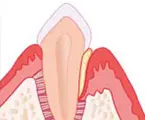
Deep pocket with
calculus
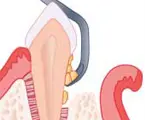
Flap reflected to
access calculus
A cleaned pocket may return the gum to its original level. Still, the deepened pocket remains present. Even practicing good oral hygiene and coming in for scheduled cleanings may not stop the bacteria from causing the pocket to be infected. The surgeon may choose to suture the gum down to where the bone has resorbed, reducing the depth of space. Once the space is reduced to 3 millimeters or less, the patient can then reach it with daily brushing and flossing, thereby eliminating the disease.
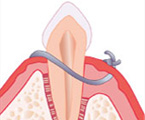
Gum sutured back to
normal height, leaving a deepened
space
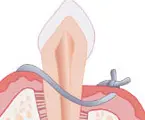
Gum sutured down
to bone to reduce
residual space
Usually, we find that the bacteria have caused the bone to resorb and become pitted. Flap surgery can then give access not only for root cleansing, but promotes recontouring of the bone itself. That’s why performing osseous surgery is a good way to eliminate moderate pockets.
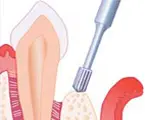
Bone recontoured after
flap reflected
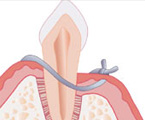
Tissue sutured down
to smooth
bone to eliminate
pocket.
If regeneration procedures are to be performed, flap surgery is also needed. The pictures below show a great representation of this.

Flap reflected to allow
bone implant
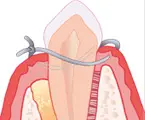
Flap resutured over
bone implant

Flap reflected to insert membrane
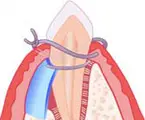
Flap resutured over membrane
Not only is flap surgery effective, but it’s also pretty painless, as patients only experience a minimal amount of postoperative discomfort.